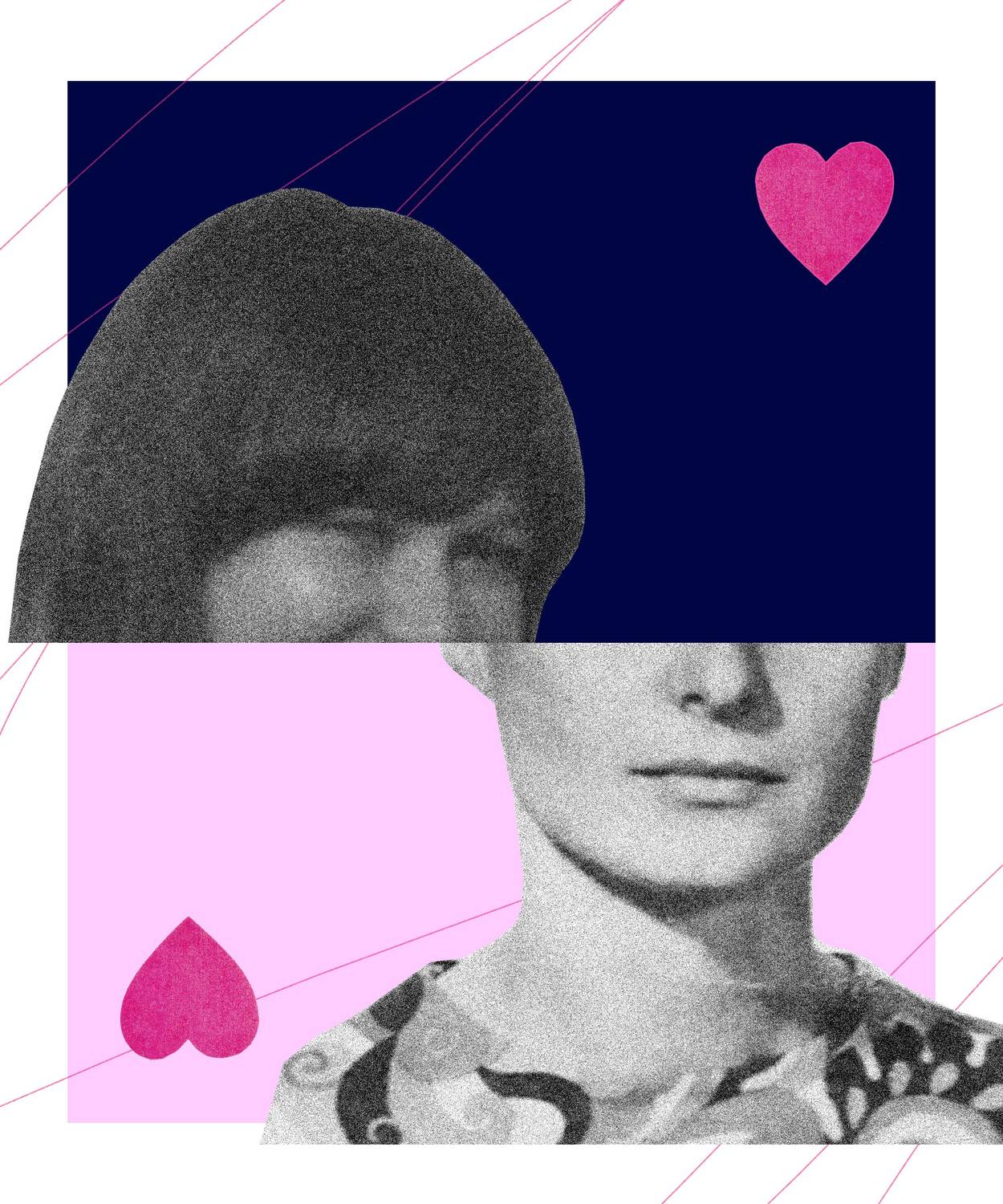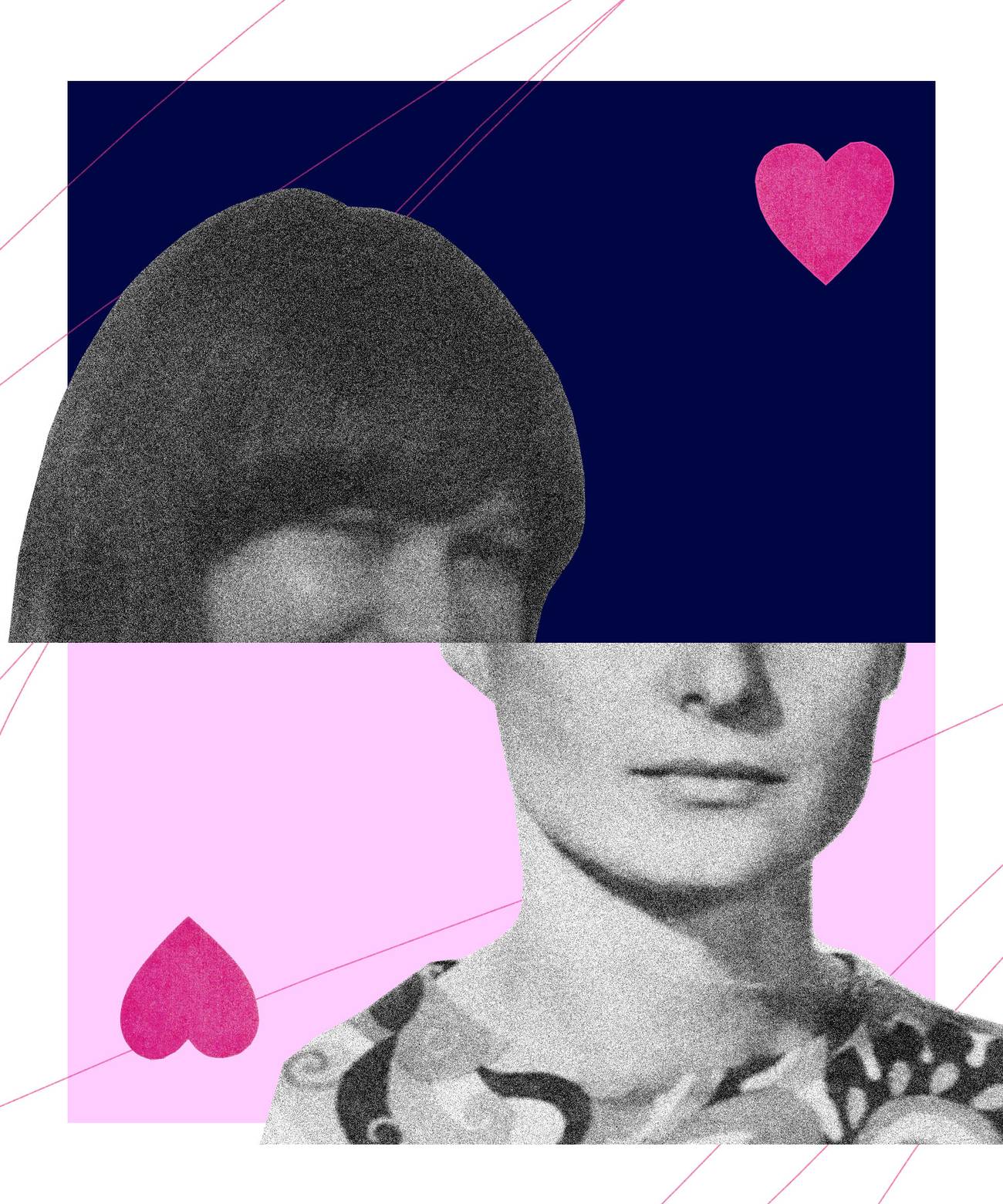My Two Moms
The very different lessons I learned from my mother and my mother-in-law




I recently lost my Jewish (former) mother-in-law, Joyce, who was a warm, doting yidishe mame and full-time balabusta—as well as the polar opposite to my stoic, Norwegian, formerly Lutheran, now agnostic mom, Mona, a career woman through and through. At 86, my mom just moved to assisted living in Oslo as she faces increasing dementia and challenges with mobility. Seeing my formerly spry, vivacious mother in such rapid decline has made me reflect on how my two beloved mother figures have influenced who I’ve become as a woman, wife, and mother.
I was raised by working parents in Oslo in the 1970s; an urban latchkey kid who was never smothered with affection, I grew to be fiercely independent by need, not want. My mother expressed her love through verbal approvals and a quick peck on the cheek. In my childhood home, you’d hear the silverware hit the plates during dinner instead of chatter, especially when my parents had a disagreement. The silence was deafening. You never interrupted or picked from the serving platter with your hands, and you certainly didn’t chew with your mouth open (we called this smatte—a fabulous onomatope).
As I grew into a young woman, something in me must have yearned for a different kind of family experience: one where sharing emotions and moods was as natural as breathing, and where everyone could speak their mind without fear of … well, the silent treatment.
Then, at 23 and a newly minted Jewess, I joined my husband’s raucous, intense tribe. Joyce was overjoyed that I had agreed to convert and that I took my new Jewish identity to heart. After all, she had not been thrilled when she was introduced to her son’s “serious” but gentile girlfriend. She gave me Jewish books to read, was a kind guide and complement to my lessons with their (Orthodox) rabbi. It was she who accompanied me to the mikvah the day I converted, bursting with pride. Joyce pulled me into her soft, generous bosom and held me tight. When my three sons were born, she held them even tighter—her first grandchildren were Jewish after all, oh the mechaya!—giving her life new meaning: She was finally a bubbe. She cooked and cleaned and babysat and volunteered and visited the sick and took her aging mother in, nursing her to the end. She taught me how to make the clearest chicken soup and the most tender brisket, all from scratch; this is how you measure coffee, and this is how you clean for Passover.
At their family gatherings everyone spoke at once, demonstratively pulled meat off the bone and licked their fingers, fought like cats and dogs, yelled, and stomped off, only to cuddle in front of the wood stove minutes later. In the beginning I was overwhelmed (“how do you do it?” my mother asked, aghast after her first meeting with the machatonim), but I grew to love this aliveness, making it mine. Joyce and I remained in contact even after her son and I divorced after 23 years, until she eventually slipped away from me during the early years of her dementia. She had been a pillar of my life—in particular, my Jewish life—for decades.
Independent, career-driven, and a feminist of the Gloria Steinem generation, my mom traveled the world in her 20s and only married my dad when she got pregnant at 29. She still wore high-heels and elegant business suits when she retired at 67, at which point she swapped out her briefcase and business-class trips to Paris, London, and New York with golf clubs, matching golfing outfits in pink and turquoise, and tickets to stunning links in places like South Africa, Mauritius, and Florida. In her early 60s, traveling internationally for work and divorced from my fiscally irresponsible father—who made her life miserable and filled with shame when he served time for tax evasion—she had a glamorous affair with a Pierce Brosnan look-alike stationed in Hong Kong who was 20 years her junior. At 70, she fell in love with Bjørn, a dapper man her age who darted across the fairway before the 18th hole with a long-stemmed, red rose, asking her out for a first date on his motorboat. They had 13 great, adventurous years together before he died of cancer during the COVID-19 pandemic.
I deeply loved (and still love) and admire both of my mothers: the biological one everyone says I resemble in both looks and gestures, who has taught me to be adventurous and fearless, as well as the homebody who showed me how to put family first—the most welcome fringe benefit to my conversion to Judaism and marriage to her son. Joyce (or Joey, as family and friends called her) had one man in her life, whom she met in college and married early, and together they started a family right away. Her husband, Jerry, my (former) father-in-law, was an oral surgeon, and Joey chose to raise a family and “do the books” in his dentistry practice rather than pursue a career. They did everything together, including building a home on 80-plus acres in rural Connecticut, riding tractors in their expansive fields, planting blueberry bushes, splitting cords of firewood from their own trees, and assembling elaborate stone walls with their own hands. Jerry nursed Joey at home through years of Alzheimer’s, until she succumbed to the disease at age 85, last year.
My grandmother Ruth died in a hospital and all she wanted was to “go home.” But of course, that was impossible, since her only daughter, my mom, was working; in any event, the Norwegian welfare state promised to take responsibility from cradle to grave. I don’t think my mother ever washed or cut her mother’s nails or tucked her in. On a recent visit to Oslo, sitting close to my mother’s face with tweezers in my hand, plucking little gray stubs from her chin, I asked her if she did this for her own mom. “Never,” she replied. That kind of physical intimacy was just not part of her mother-daughter relationship. I felt sad for my grandmother and mother, thinking about what they had missed. I thought of the closeness that Joey had shared with her mother as she aged.

Mom, tall and lean with her straight back and muscular arms, showed me how important physical fitness was. In 1977, when the movie Saturday Night Fever was all the rage (I was an awkward, lanky 12-year-old), she took lessons and demonstrated the Brooklyn Shuffle à la John Travolta to my girlfriends, with the Bee Gees blasting from our living room speakers. I wanted to die, but they thought she was the coolest mom ever, in her fitted jumpsuit and high-heels. Not only did she start horseback riding with me when she was in her 40s, but would race her grandsons down ski mountains and take spinning classes well into her 70s. When her drop-foot prevented her from skiing and spinning, she had TRX suspension training gear mounted in the ceiling of her apartment, and wore a brace on her bad leg so she could walk the 18 holes without renting a golf cart. When I tried spinning for the first time in my 40s, and thought I would give up after the first 10 minutes, I visualized my mom in her padded Spandex shorts and thought, you better stick it out; your mom spins, so can you! She was a principled woman who said “no thanks” to seconds and pushed away desserts—but never wine—for decades. It’s only now, in her 80s, that she has begun indulging in sweets.
Joey, on the other hand, seemed to always have limped and sighed and moaned as she moved around at a snail’s pace, her matronly shape covered loosely in comfortable outfits. She was only in her mid-40s when I met her, born in 1937 just like my mom, but somehow seemed older, calmer, slower, and more settled. She said mowing the undulating lawns surrounding their house was her exercise (even with an electric mower, it really was hard work—I saw how much it made her sweat!), and I don’t think she ran a day in her life. She wore muumuus at home, stretch-waist pants, and sensible flats, and waddled when she walked. One spring she got up at 5 a.m. every morning with her husband to “do the track” at the local school’s athletic field. This schedule worked for him, an early riser, but she gave up quickly. She preferred to sleep in and needed time for her slow morning routine, taking her carefully measured, percolated cups of coffee very seriously. Before I had kids, in the early days of my life as a Jewish woman, I loved spending lazy mornings at her house.
My two mothers, my role models, lived lives as disparate as the vast ocean that separated them, and I juggled my desire to please them as much as my need to define the “right” path for me. Especially when I was raising my children, I felt as exhausted from “translating” and negotiating between their expectations, trying to lessen their at times critical opinions of each other’s cultural norms, as from the nitty-gritty of being knee-deep in my own mothering. That in-between role was already painfully palpable during my first son’s bris, 28 years ago. Mom, rigid and in cultural shock, stood mute next to me in shul that day, while my beaming and sighing-from-joy mother-in-law flanked my other side. At the sound of my son whimpering when the mohel snipped, Joey squeezed my hand, kvelling, and I squeezed my mom’s hand, whispering to her, “Don’t worry. He’ll be fine,” while my breasts pounded and leaked in response to my baby’s distress.
I smile today, when I think of how much I differentiated myself from my mother. I like to say, and believe, that none of my choices was conscious, but guided by a need to create what the child in me craved: I was a stay-at-home mom until my sons were in middle school. I baked, served hot chocolate, and built snow forts with them on snow days. My graduate degrees came later, part-time, and despite them I didn’t pursue a full-time career. I married an accountant (hello, Freud!), lived a traditionally observant Jewish family life, deeply anchored in Jewish rituals and Jewish community, and said “yes, please!” to desserts and seconds as my waist expanded proportionally to how fulfilled I felt as a Jewish woman, mother, and wife. I smothered my boys in smooches, actually am loud, and through therapy I’ve learned to confront and repair, turning disagreements into opportunities for growth, instead of avoiding them, like my mom would.
All along, I’ve known my two mothers had one thing in common: They loved their children and they loved their lives. They were content and felt fulfilled, each in her own way, and this may have been the best thing they role-modeled for me. They also supported me and my choices, although they may not always have understood or agreed with them. In this I count my blessings as I navigate the many emotions around the loss of one, and the decline of the other. There is mourning and there is celebration in a full life. Opposites, but equals, like my mothers. And through it all, they continue to guide me on my way.
Nina Lichtenstein is a writer, teacher, and storyteller who divides her time between Maine and Tel Aviv.